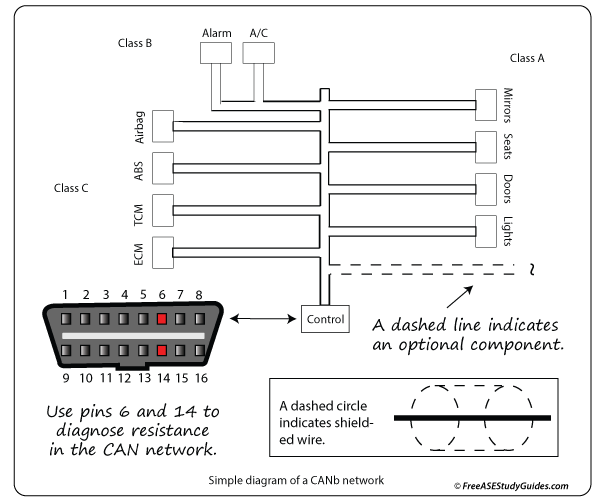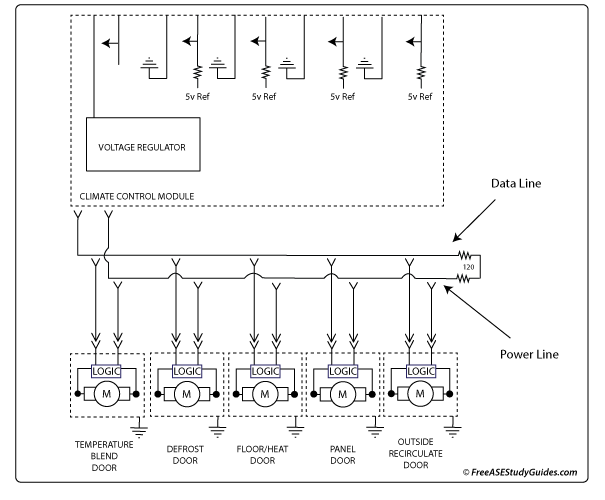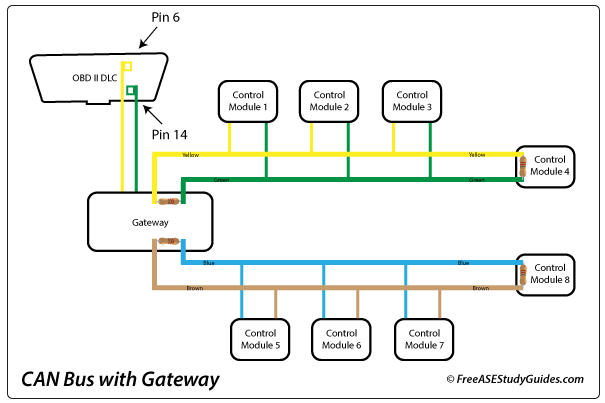CAN and the Climate Control Network

Today's climate control system is part of the Controller Area Network or CAN. CAN is a standard protocol automotive electronic control modules use to communicate and pass information along the CAN bus. On this twisted pair wire, all modules receive all messages. This system uses smart sensors and actuators that contain microchips and logic. A smart sensor broadcasts its signal to all control modules. Only modules that require this information retrieve it as it passes by. Other modules ignore the message, only accepting those necessary for their operation.

CAN is segmented into three classes according to speed. Class A is the slowest, up to 10 Kbps. Class B operates at speeds up to 125 Kbps and Class C up to 1 Mbps. The climate control system operates on a Class A or Class B network. The actuators form a (LAN) Local Area Network like the one in the illustration. Each actuator contains a chip with a unique ID capable of receiving position information from the control module and indicating its actual position back to the controller.

CAN allows scan tools to communicate through bidirectional communication. One of the many benefits provided by the CAN networking protocol. Another important benefit has been the reduction in harness size. This savings is because modules, actuators, and sensors share the same line.